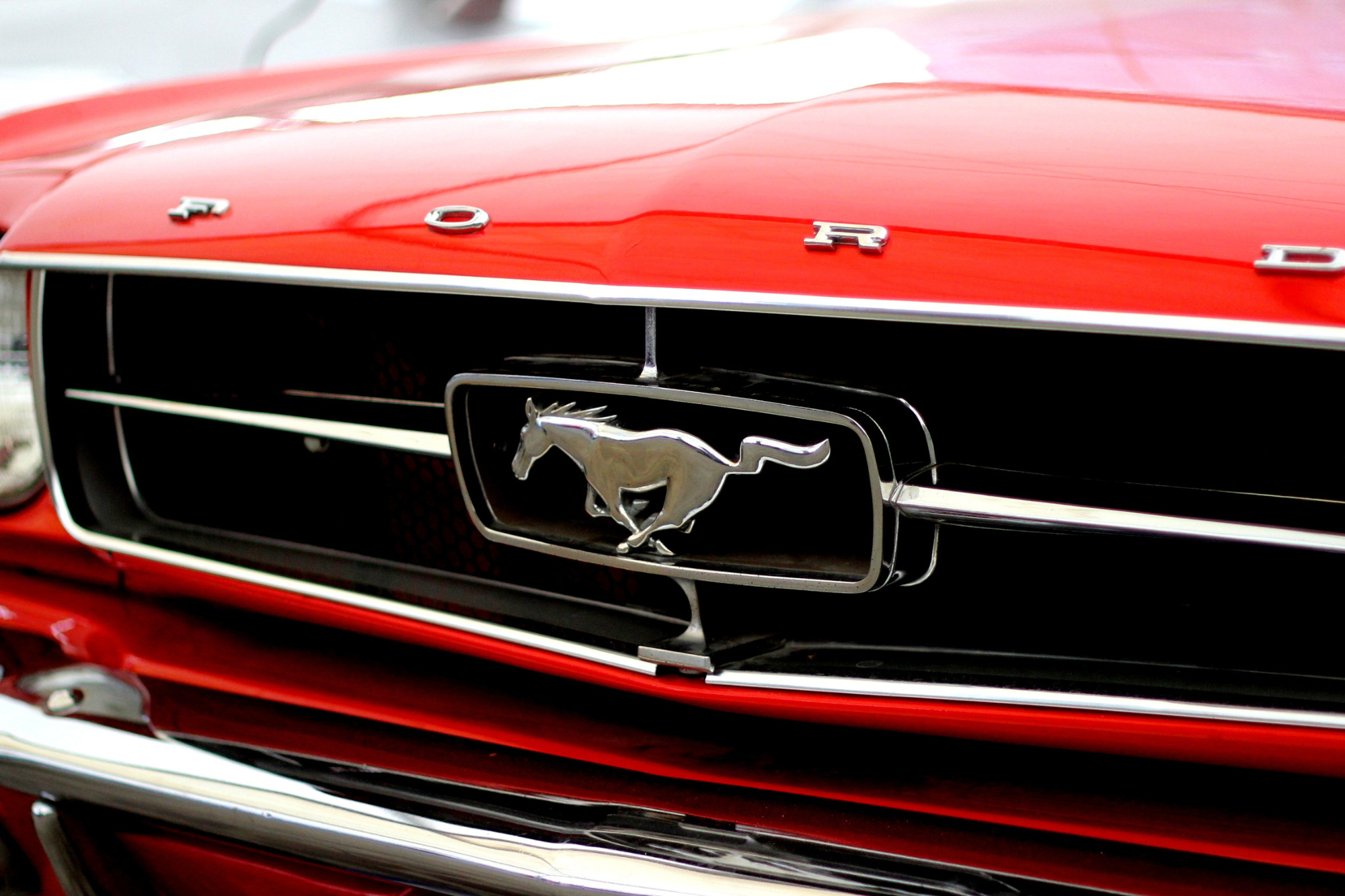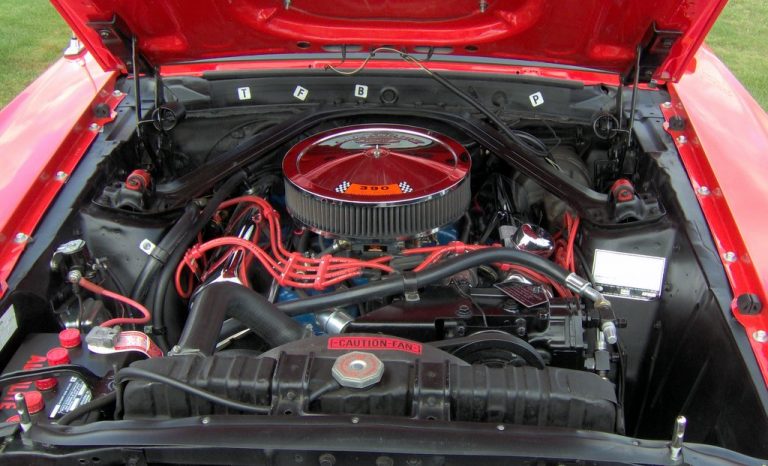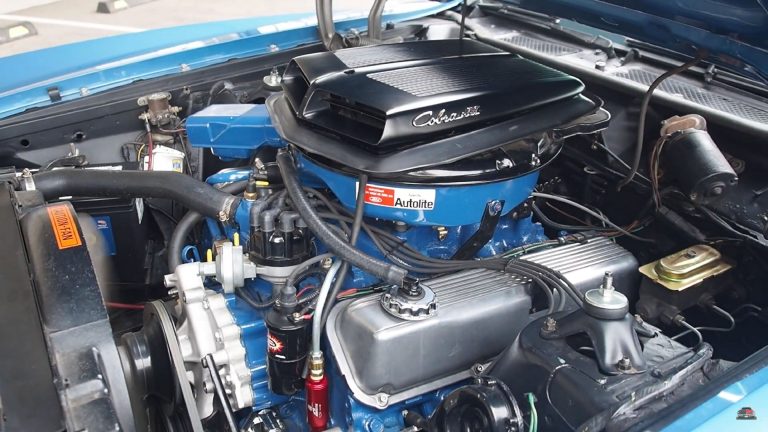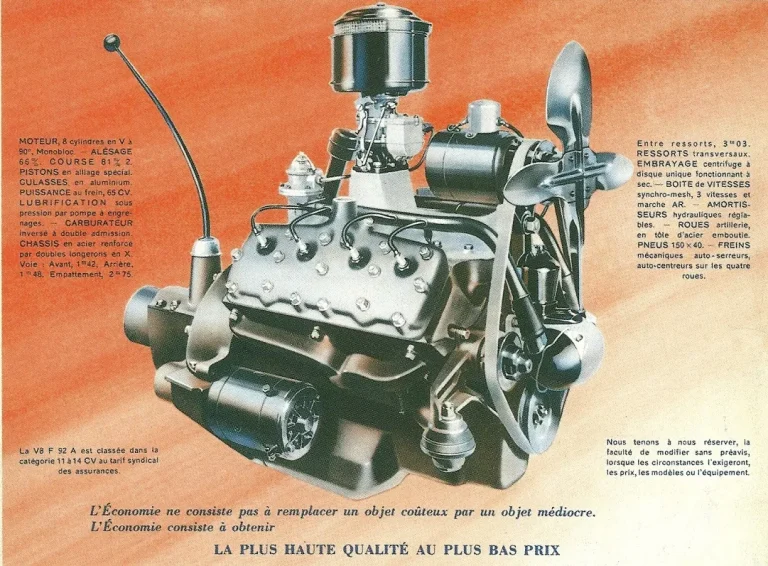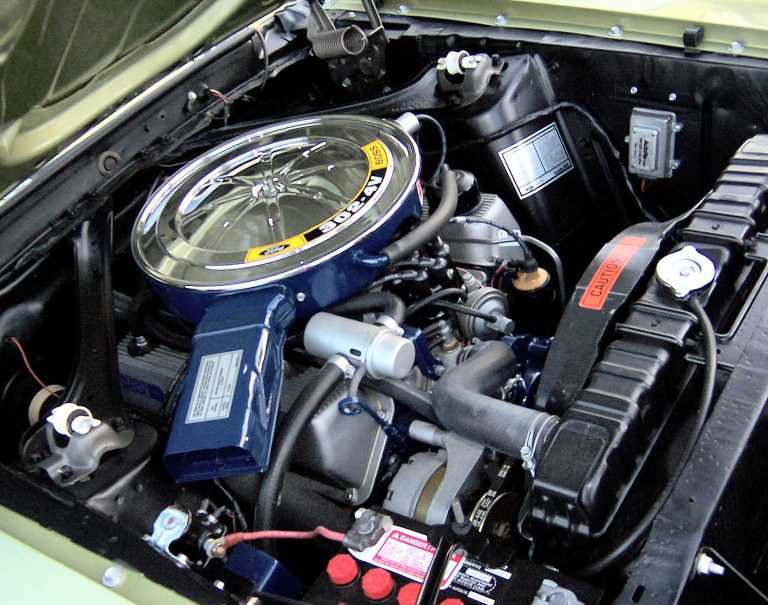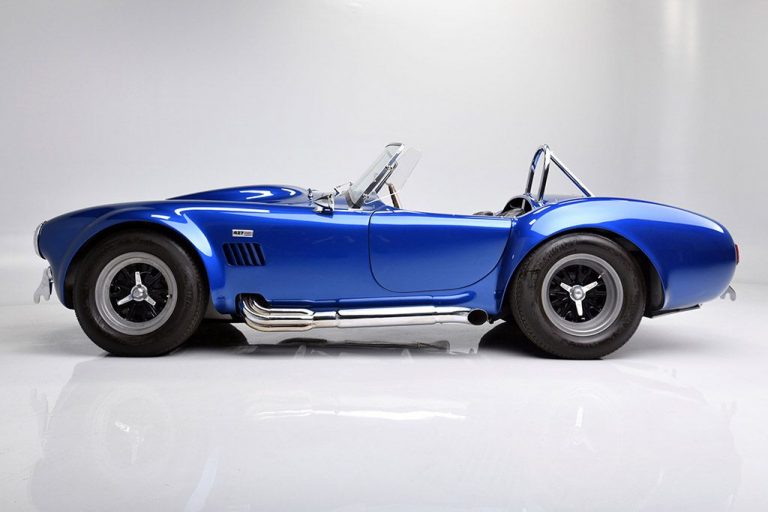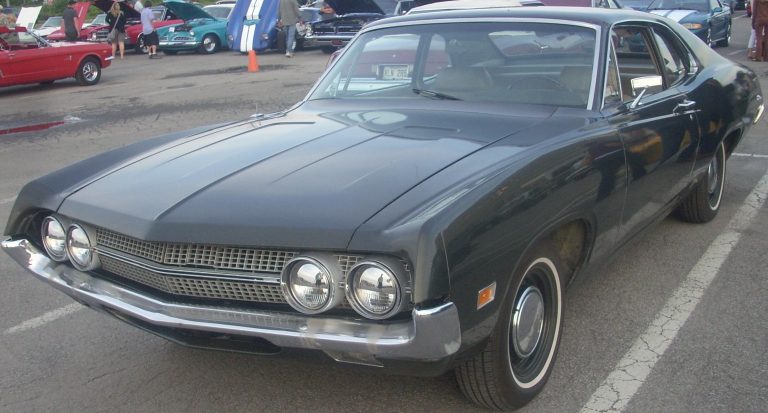Best Ford Mustang Engines in History

Meet Chandler
Chandler has a bachelors and masters degree in history as well as a passion for classics and muscle cars. His education and historical knowledge makes him skilled at crafting highly detailed articles about America’s muscle cars and automotive history. His love of muscle cars is undeniable, with him seeking them out at every opportunity during his visits to auto shows and car meets. Chandler’s knowledge and enthusiasm towards automotive history make him a great asset to the Muscle Car Club community.
Undoubtedly, Lee Iacocca’s Ford Mustang is one of the most iconic cars in American history. It debuted as the very first Pony Car back in 1965, and it has seen unprecedented success since then. From the small block V6s and V8s of the first generation, through the turbo-fours in the 1980s and all the way up to the current 5.0 L Coyote motors, the Mustang has had quite the array of engines in its history. Starting in 2024, the seventh generation of the Ford Mustang will take the streets. In its honor, let’s take a look back at the best and most iconic Ford Mustang engines over the years.
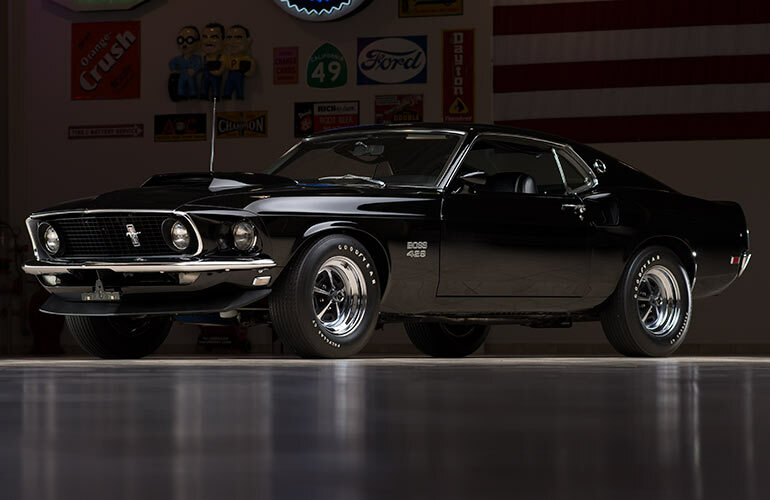
Table of Contents
Ford Mustang Engine History
The First Generation of Ford Mustang Engines
– The Ford 289 V8 Engine (1965-1968)
– The Shelby 390 V8 Engine (1967-1969)
– The Cobra Jet Mustang Engines (1968-1971)
– The Ford NASCAR 427 and 429 V8 Engines (1968-1970)
– The Ford Boss 302 V8 Engine (1969-1970)
– The Cleveland and Windsor 351 V8 Engines (1969-1973)
The Ford Mustang II Engines
– The Ford 140 Lima Inline-4 Engine (1974-1978)
The Foxbody Mustang Engines
– The Turbo 2.3 L Lima Foxbody Mustang Engine (1979-1981; 1983-1985)
– The Ford 5.0 L HO V8 Engine (1982-1995)
The SN95 Mustang Engines
– The Ford Cobra Modular 4.6 L V8 Engine (1996-2004)
The S197 Mustang Engines
– The Shelby GT500 5.4 L V8 Engine (2007-2009; 2011-2012)
– The S197 Ford 5.0 L Coyote V8 Engines (2011-2014)
The S550 Mustang Engines
– The S550 Ford Mustang 5.0 L Coyote V8 Engines (2015-2023)
– The Shelby 5.2 L Voodoo and Predator V8 Engines (2015-2023)
– The Ford Mustang 2.3 L EcoBoost Turbo I4 Engine (2015-2023)
Seventh Generation Mustang Engines
The Best Ford Mustang Engines in History Conclusion
Ford Mustang Engine History
Through its nearly six decade history, there have been over 25 different Ford Mustang engines. Their displacements have run from 137 ci all the way up to 429 ci. They have been naturally aspirated, turbocharged, and/or supercharged. The Mustang has seen V6s and V8s, as well as inline-fours and inline-sixes.
When it was introduced for the 1965 model year there were four different Ford Mustang engines available: two V6s and two small-block V8s. As the 1960s progressed, the engine displacements got bigger and bigger, culminating with the 429 Super Cobra Jet in 1969. The ‘60s was the decade the Mustang made its name, as big block V8s and massive four-barrel carburetors brought seemingly endless amounts of power and fun.
The 1970s brought emissions crunches, unleaded fuel, and the energy crisis, which temporarily put the kibosh on performance. The big blocks were all gone and in their place were either small displacement turbo inline-fours or naturally aspirated V6s and small block V8s.
However, Ford rebounded in the 1990s, and in 1996 the Mustang broke 300 hp for the first time since 1971. In the mid-2000s, the Shelby variety of Mustangs finally returned to the fold after a 30 year absence, and the iconic Mustang was finally back. Ford released their newest 5.0 L Coyote engine for the 2011 model year, and it has been hailed as one of the best Mustang engines of all time. What’s going to be the Ford Mustang engine for 2024 is unclear, but it will certainly be dynamic and powerful.
The First Generation of Ford Mustang Engines
The first generation lasted from 1964-1978 and featured more than 10 different Ford Mustang engines. Some of the highlights were the 289, Boss 302, and 390 V8s; the 428/9 Cobra Jets; and the 351 Cleveland and Windsor V8s.
The Ford 289 V8 Engine (1965-1968)
When it first debuted in 1965, the biggest Ford Mustang engine available was the 289 cid V8. Nicknamed the Windsor where it was created, it was a small block V8 that was available in several different configurations. It was fitted to both the standard Mustang and the specially tuned Shelby GT-350 and GT-350R. Power ranged from 200-271 hp on the standards, but the Shelbys turned up the wick to 306-360 hp. Part of this was due to the Shelbys taking super premium gas whereas the others ran on regular.
The standard 289 V8s had a cast iron block while the Shelbys got one made of lighter aluminum. The Shelbys also got a high-rise Cobra intake manifold, which was also made of aluminum. You could also get a factory installed Paxton Supercharger on the Shelbys, which bumped up power by over 100 hp. The 289 V8 was eventually dropped in 1969 in favor of the 302 V8.
The Shelby 390 V8 Engine (1967-1969)
The Shelby 390 V8 was the first big block Ford Mustang engine in production. It was only available from ‘67-’69 and Ford made less than 11,000 units total. Also known as the Ford FE engine, the 390 V8 in the Mustangs was the 4 valve version. It made 320 hp and 427 lb-ft of torque. Some versions of the 390 V8 got a 4 bbl carburetor, whereas others had an optional 3×2 bbl carburetor. The 3×2 carb raised power all the way up 401 hp and was meant to be installed post-purchase. The Shelby 390 V8 was soon superseded by the Cobra Jet V8s midway through 1969.
The Cobra Jet Mustang Engines (1968-1971)
Probably the most famou Ford Mustang engines of all time, the Cobra Jet and Super Cobra Jet defined the Pony Car of the late-’60s and early-’70s. Both engines were big block V8s, with the Cobra Jet at 428 cid and the Super Cobra Jet at 429. The 428 Cobra Jet debuted in 1968 as an upgraded version of the standard 428 V8. Ford said it made 335 hp and 440 lb-ft of torque, but most people estimated it closer to 400 hp. Ford put it in their GT-500KR, which stood for “King of the Road,” and it lasted in production until 1969.
There was also a 429 Boss Cobra Jet that was only available for 1970. Ford quickly replaced it with the top tier 429 Super Cobra Jet in 1971, which made 375 hp and 450 lb-ft of torque from the factory. It had a very large 735 cfm Holley four-barrel carburetor, and Ford put it in the Mustang Mach 1. Internals were forged and it had a hydraulic camshaft, and very early versions actually had an adjustable valve train. An optional drag pack included a larger 780 cfm Holley four-barrel carb, external oil cooler, and different cams.
The Ford NASCAR 427 and 429 V8 Engines (1968-1970)
In addition to the Ford Mustang Cobra Jet engines, there were also the 427 Ford FE and 429 Boss V8s. Both engines were created and put into production Mustangs for homologation purposes so they could compete in NASCAR. The Ford 427 was only available for 1968 and pushed out 390 hp and 460 lb-ft of torque. Ford also put the 427 in their iconic MkII GT40. The MkII was famously piloted by Ken Miles in the 1966 24 Hours of Lemans, which was eventually chronicled in the movie Ford V Ferrari.
The 429 Boss V8 was Ford’s NASCAR successor to the 427, and they ran it from 1969-1970. The 429 Boss – which would be superseded by the Super Cobra Jet in 1971 – was actually based on the Ford 385 V8. The Boss 429 made 375 hp and 450 lb-ft of torque, aided by aluminum heads and high rise intake manifold. Fitted was a 735 cfm Holley 4 bbl carb and a forged crank, pistons, and rods.
The Ford Boss 302 V8 Engine (1969-1970)
Ford only made their original Boss 302 V8 available for two years, from ‘69-’70. It was based on the standard 302 V8 that Ford introduced in 1968, but with several changes and more power. It had a forged crank and 4-bolt main caps, as well as superior cylinder heads from the 351 Cleveland V8. Production versions of the Boss 302 made 290 hp and 290 lb-ft of torque, but race versions made over 450 hp. This was considerably larger than the 220 hp the standard non-Boss 302 V8 made.
The Cleveland and Windsor 351 V8 Engines (1969-1973)
The Ford Cleveland and Windsor 351 V8s were both produced from 1969-1973 in the Mustang. These Ford Mustang engines were named for their production plans. The higher powered V8 was manufactured in Cleveland. For 1969, the Windsor V8 was rated at 250 hp and 355 lb-ft of torque and the Cleveland was rated for 290 hp and 385 lb-ft of torque. Ford gave the Cleveland a larger 4 bbl carb compared to the Windsor’s 2 bbl option, which helped increase power.
Both engines would see 10 hp increases for 1970, before dropping back down to 240 hp and 280 hp in 1971. The power reduction was mainly due to increasing emissions and fuel restrictions, which required detuning. By 1973, the Windosr made an anemic 165 hp, before being discontinued for the new gen.
In 1971, Ford started releasing new variants of the 351, including the Boss 351 and the Cobra Jet 351. The Boss 351 made 330 hp and 380 lb-ft of torque, while the 351 Cobra Jet made 280 hp and 345 lb-ft of torque. In ‘72-’73, the Boss 351 was replaced with the High Output (HO) 351, which made a considerably less 266 hp and 301 lb-ft of torque. The 351 Cobra Jet was still there, but it only made 250 hp and 290 lb-ft of torque.
The Ford Mustang II Engines
The second gen Ford Mustang engines arrived in 1974 and lasted only until 1978. The Mustang was rebranded as the Mustang II and is widely regarded as the worst Mustang generation ever. Increasing emissions regulations sapped the Ford Mustang engine’s power output. Even iconic packages like the Cobra II, King Cobra, and Mach 1 couldn’t hide the pitiful performance. Ford used a reworked version of the 302 V8 from ‘75-’78, but its middling performance was nothing special.
The Ford 140 Lima Inline-4 Engine (1974-1978)
The Mustang featured its smallest engine ever starting in 1974, the 140 cid Lima inline-four. The V8s were seen as too heavy by Ford, who was trying to give the Mustang a more European style. The engine was a 2.3 L but was billed as the 140 cid Lima. It had dual overhead cams and a 2 bbl Weber-Holley carb. The Lima 140 was also featured in the Ford Pinto and various other Fords – none of them performance models.
During its lifespan, the Lima 140 made only 100 hp and took more than 14 seconds to go from zero to 60 mph. It was outclassed, but only barely, by the slightly larger and naturally aspirated V6 and 302 V8. It did however offer better gas mileage, a sad compliment for any Mustang of any generation.
The Foxbody Mustang Engines
Following the neutered Mustang II, the third gen of Ford Mustang engines debuted in 1979 on the new “Fox” platform. Known as the Foxbody Mustang, the third gen started off slow, but by the 1990s the Mustang was beginning to feel like a real Pony Car again.
The Turbo 2.3 L Lima Foxbody Mustang Engine (1979-1981; 1983-1985)
The Foxbody Mustangs carried over the 140 Lima inline-four from the Mustang II, but rebranded it as a 2.3 L. They also introduced a turbocharged version of the 2.3 L Lima, which made 145 hp versus the naturally aspirated version’s 88 hp. The turbo Lima I4, though it had the smallest displacement, was often the highest performing Mustang engine in the lineup. From ‘79-’82 it made more power than the 3.3 L V6 and 255 V8.In From 1983-1985 it was second only to the 5.0 L V8, and in its final year it made only 5 hp less than the V8.
Starting in 1983, it was fuel injected and Ford put it into the Thunderbird Turbo and Turbo GTs. Ford also put it in their SVO Mustangs from ‘84-’85, where power was bumped up to 174 hp and then 205 hp. Ford dropped the turbo Lima from 1986 on.
The Ford 5.0 L HO V8 Engine (1982-1995)
Ford had dropped the 302 V8s from its lineup starting in 1979, and though there was briefly the 255 V8 in 1981, the fastest Mustang was still the turbo four-banger. However, starting in 1982, Ford rectified that when they brought in the new 302, branded as a 5.0 L High Output (HO) V8. The 5.0 L immediately bumped up power over the outgoing 255 V8, and made 157 in 1982. It was pushed to 175 hp the next year, and in 1984 it got fuel injection.
Starting in 1984 the 5.0 L broke 200 hp for the first time with 210 hp, and in 1988 it got a small bump up to 225 hp. Power stayed there until 1993, when Ford introduced a one year only Cobra version that made 235 hp. The 5.0 HO V8 stayed in the lineup until 1995, when the most powerful Cobra version made 245 hp.
The SN95 Mustang Engines
Ford gave the fourth generation of the Mustang the SN95 code, and it was introduced in 1996. It was the beginning of the Mustang’s reclamation, and the return of 300+ hp Ford Mustang engines. In 1995, Ford released a one-off version of the 351 Windsor V8, which was tuned by Jack Roush Technologies. It made 300 hp, the first Ford Mustang engine to do so since 1971. Ford put in the Cobra R SVT for one year only.
The Ford Cobra Modular 4.6 L V8 Engine (1996-2004)
Introduced in 1996 in the Mustang SVT Cobra, the Ford modular 4.6 L V8 was fantastic. There were two different versions in the SN95 Mustangs, a 2 valve version and a 4 valve version. Ford put the 2 valve version in the standard Mustang GT, and gave the Mach 1 and SVT Cobras the 4 valve. Both had a cast iron engine block, hypereutectic pistons, and a single overhead camshaft. For 1996, the 2 valve V8 made 225 hp, while the Cobra 4 valve version pumped out 305 hp and 300 lb-ft of torque.
In 1999, Ford bumped up power to 320 hp, and in 2003 they released a supercharged version in the SVT Cobra that made 390 hp and 390 lb-ft of torque. Eventually a 3 valve version would power the fifth gen Mustang GT at 300 hp and 320 lb-ft of torque.
The S197 Mustang Engines
From 2005-2014, the Ford Mustang engines of the S197, while not a return to the big block era of the 1960s and 1970s, finally started to produce some real power again. Ford came out with an updated 5.0 L V8, the Coyote. It was the largest production Ford Mustang engine ever created until the S550 came out.
The Shelby GT500 5.4 L V8 Engine (2007-2009; 2011-2012)
When the Shelby namesake returned in 2007 it did so with a bang. Inside was a 5.4 L supercharged modular V8 producing 500-550 hp and 510 lb-ft of torque. The blower was a Eaton M122H Roots style supercharger, and helping cool the charge air was a giant air-to-liquid intercooler. Starting in 2011, the block was changed to aluminum, which shaved off over 100 lbs while maintaining strength.
The supercharged 330 cid modular V8 was an incredibly popular engine that many people saw a true return to form for the Mustang. It was the first Mustang to reach 500 hp, and at the time was the most powerful one ever created.
The S197 Ford 5.0 L Coyote V8 Engines (2011-2014)
Ford first introduced their famed 5.0 L Coyote V8 engine in 2011 inside the Mustang GT. It made 412 hp and 390 lb-ft of torque in its naturally aspirated version and 500 hp and 490 lb-ft of torque in the supercharged version inside the Mustang GT-350. The engine was designed to make lots of power, reliably, and compete with the much larger Chrysler HEMIs and GM LS series of engines. The cylinders have special lining to handle power reliably, and have twin-independent variable cam timing.
Derived from the standard Coyote 5.0 L was the Boss 302 variant for 2012-2013. Pretty much all that was the same was the engine block, and the pistons and rods were forged to handle more power and the higher 7,500 RPM redline. Ford ported the heads and used a higher lift camshaft, and lightened the valvetrain and included sodium filled exhaust valves. Power was bumped up to 444 hp and 380 lb-ft of torque and the engine was still naturally aspirated.
The S550 Mustang Engines
The most current generation of Ford Mustang engines, the S550 has some potent engines today. Ford kept the 5.0 L Coyote from the previous generation and added a 5.2 L V8 to compliment it. They also brought back a 2.3 L turbo, but this time Ford gave it some sauce to really compete.
The S550 Ford Mustang 5.0 L Coyote V8 Engines (2015-2023)
The 5.0 L Coyote that was carried over from the S197 was largely the same for 2015. Power was increased to 435 hp and 400 lb-ft of torque. In 2018, the Coyote 5.0 L got a lighter aluminum block to shave weight. It also got another bump in power, this time to 460 hp and 420 lb-ft of torque. Ford also gave it sprayed-in cylinder liners to help compensate for the power, and they bored out the cylinders slighter, making it a true 5.0 L for the first time (previously it was 4,951 cc). For 2018 they also raised the redline to 7,500 RPM, like in the previous Boss 302 Coyote.
Ford created a higher output version that had a larger throttle body and tok the intake manifold off the GT-350. They put it inside the special Bullitt (2019-2020) and Mach 1 (2021+) Mustangs. These are currently the highest horsepower production Ford Mustang engines ever built that were not put into Shelby models.
There are also various supercharged versions that have made it inside other Shelbys. Such as the 2015-2017 Shelby Super Snake, Shelby GT, Shelby GT-350, Shelby GTS, Shelby GT-H, and Shelby Terlingua.
The Shelby 5.2 L Voodoo and Predator V8 Engines (2015-2023)
After using various supercharged versions of the 5.0 L Coyote and 5.8 L Trinity V8s from 2013-2014, Shelby introduced the new 5.2 L Voodoo V8 to power the GT-350 variants from 2015-2019. The 5.2 L voodoo is a flat-plane crank V8 that made 526 hp and 429 lb-ft of torque. It has a screaming redline of 8,250 RPM and is hand built and specifically designed for high performance racing.
Superseding the Voodoo for 2020+ is the 5.2 L Predator V8 for the Shelby GT-500. Ford fitted it standard with a supercharger to make 760 hp and 625 lb-ft of torque. The Predator V8 is the most powerful production Ford Mustang engine ever created. It shares many of the same components of the Voodoo, but has a different crank design. Everything about the Predator is built for racing, like the Voodoo, and Ford bills it as track ready out of the box.
The Ford Mustang 2.3 L EcoBoost Turbo I4 Engine (2015-2023)
To supplement the 5.0 L V8 Coyote, in 2015 Ford introduced the 2.3 L turbocharged EcoBoost inline-four engine. It was produced to reduce emissions while still producing Mustang level performance. It is the smallest engine Ford has put in the Mustang since the beleaguered turbo-four from the Foxbody era. Actually, it’s even smaller than that inline-four by 3 cid, making it the smallest Mustang engine ever.
The Mustang 2.3 L turbo EcoBoost makes 310 hp and 320-350 lb-ft of torque, which is more than respectable. In fact, at 134 hp/liter, it’s more powerful than any other Mustang per liter except the 5.2 L supercharged Predator V8. While some might complain about emissions choked engines, the EcoBoost doesn’t really fit that label. It is more powerful than any Mustang from 1972-2003, and puts many other larger engines on the market to shame.
Seventh Generation Mustang Engines
It’s currently unknown what exactly Ford is going to put inside the newest seventh generation of Ford Mustang engines. Ford recently unveiled the 2024 Mustang GT at the Detroit Auto Show in September 2022, but they did not reveal what engine was under the hood. From all accounts, it appears to be a 500+ hp version of the 5.0 L Coyote, but nothing is confirmed yet.
The Best Ford Mustang Engines in History Conclusion
Overall, the Ford Mustang has had some pretty incredible engines in it over the past nearly six decades. From naturally aspirated big blocks, to supercharged small blocks, to turbo four-bangers, the Mustang has had it all. Though there was a lull from the 1970s-1990s, the Mustang came back in full force by the 2000s. Today, they are some of the most powerful production cars available in the world.
These were some of the most iconic and top performing Ford Mustang engines of all time. We didn’t quite get to every iteration, but we think these 20+ versions are some of the best. They range from the Ford Mustang’s smallest performance engine, the turbo EcoBoost, to its largest, the 429 Super Cobra Jet.
What Ford Mustang engines have you owned over the years? Do you still own one now?
Let us know in the comments!

